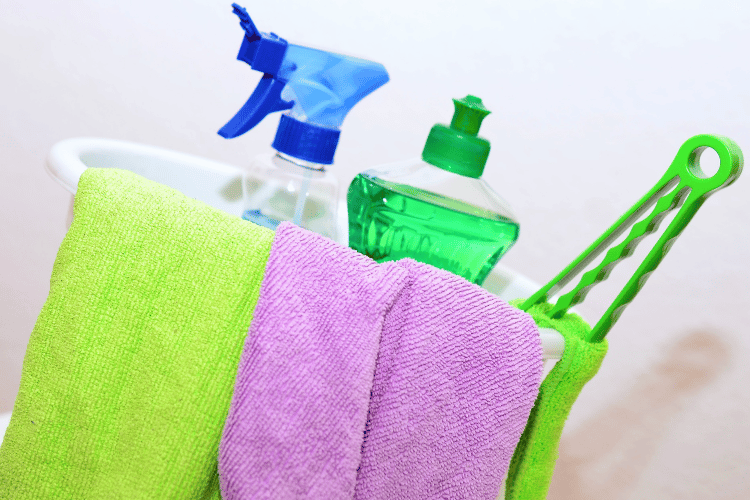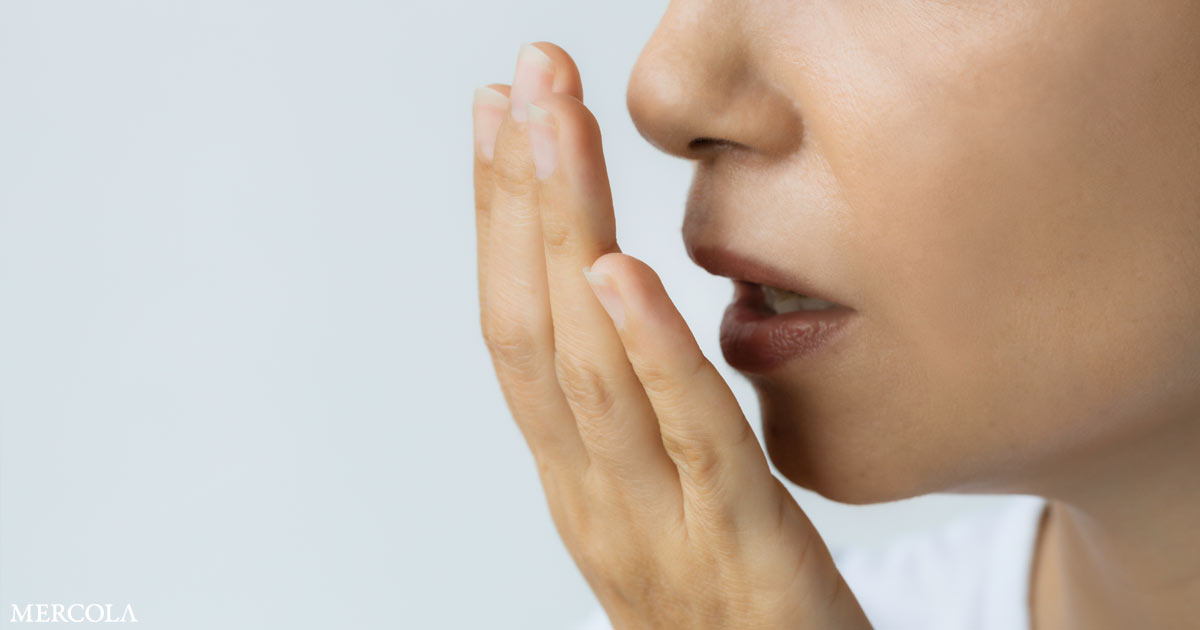
[ad_1]
Everyone loves a clean home — the smell of cleaning products and detergents is a key indicator of a germ-free, tidy space. However, most chemical household cleaners contain harmful toxins to humans and the environment.
For instance, one recent study found that scented commercial surface cleaners emit high traces of secondary organic aerosols (SOAs) indoors, also generated by cars. While cleaning, SOA concentrations can exceed outdoor levels of air pollutants. People also inhale 1 billion to 10 billion SOA nanoparticles per minute when mopping the floors.
Meanwhile, highly-toxic commercial cleaners severely damage ecosystems as they get flushed through drains and dumped into waterways.
Replacing harmful chemicals with green alternatives can better protect you and the environment while leaving your home sparkling clean.
6 Hazardous chemicals to replace with natural alternatives
1. All-Purpose Cleaner
Studies have found that 30% of commercial cleaning products contain endocrine-disrupting properties, such as galaxolide, which scientists have linked to thyroid dysfunction, decreased fertility, and genetic damage in marine species.
Although SC Johnson began phasing out galaxolide from its products — Shout, Glade, and OFF! — in 2018, you might still want to use a DIY all-purpose cleaner to be on the safe side.
Making your all-purpose cleaner is easy enough. All you need to do is add distilled water, vinegar, and a pleasant scent — such as fresh herbs, citrus, or essential oils — to a spray bottle.
However, avoiding spraying your granite and marble countertops with vinegar is critical, as its acidity can ruin the sealant.
2. Furniture Polish
You might think there’s nothing better than wiping away dust with lemon-scented Old English Furniture Polish.
Unfortunately, the Environmental Working Group (EWG) gives it an F rating due to its respiratory, allergen, and cancer risks. Its ingredients — petroleum gases, silicone fluid, and kerosene — have dire impacts on water resources and soil in the environment.
A much safer alternative is equal parts olive oil and vinegar in a jar — you can also add a few drops of essential oils for a fresh scent. Stir the ingredients and apply the mixture to the furniture with a dry, clean cloth.
3. Paint
Giving your home a fresh coat of paint or simply touching up scuffs and marks reinvigorates the space. However, paint is a highly flammable liquid waste that negatively impacts indoor air quality by emitting volatile organic compounds (VOCs), such as formaldehyde, toluene, and benzene.
According to the American Lung Association, nausea, breathing difficulties, eye irritation, and damage to the central nervous system are possible with VOC inhalation.
Even though many assume zero-VOC paints are less effective, they work just as well as oil-based paints if your project is prepped correctly. Major brands such as Benjamin Moore, Sherwin Williams, and Valspar carry paint products without VOCs.
Keep in mind that even zero-VOC paints might contain some amount of VOCs, but they are at low-enough levels to not cause any concern.
4. Glass Cleaner
Commercial glass and surface cleaners typically contain butyl cellosolve — a harmful solvent that can lead to eye irritation, vomiting, headache, and a metallic taste.
While it’s unknown what sort of reproductive disruptions butyl cellosolve has on humans, studies have shown that high concentrations can hinder fertility and cause animal birth defects.
Instead, use vinegar to clean windows and mirrors around the house. Vinegar is safe but highly acidic, with a lower ph level that gives it stain-fighting powers to break down minerals.
Alone, vinegar is an excellent natural cleaning solution for fragile surfaces — however, many people combine it with baking soda to lift difficult dirt and grime more easily. Avoid using vinegar on stone, computer or phone screens, or ceramics. You should also avoid mixing it with bleach, which can generate lethal fumes.
5. Bleach
Bleach is a common, corrosive cleaning agent that can become highly toxic, causing harm to those with respiratory conditions and able to burn skin. It’s also lethal to ecosystem health when it enters waterways.
Consider what you might clean with bleach around the house — clothes, sink drains, toilet bowls, and dirty grout come to mind. A much safer alternative is baking soda, which, along with vinegar, will become your new favorite householder cleaner.
Sprinkle baking soda and vinegar in the toilet and let it sit for 30 minutes, then wipe away and flush for a shiny, bright throne. Equal parts of baking soda and vinegar can make it easier to unclog sink drains.
Since you’re not supposed to use vinegar to clean countertops, you should combine baking soda with liquid castile soap, vegetable glycerin, and essential oils to create an effective cleaning solution.
6. Air Freshener
Plugging in an air freshener might seem a harmless way to wrap up house cleaning — or perhaps you prefer to light a scented candle to make the space smell homier.
Fragrance chemicals reduce indoor air quality by elevating VOC exposure, triggering ear, eyes, and throat irritation, migraines and nausea. A 2021 study also suggests that scented candles emit nitrogen dioxide concentrations that slightly exceed the safety standards of the World Health Organization (WHO).
Although proper ventilation can significantly improve the risks, an essential oil diffuser will ensure the same results without hazardous chemicals. Additionally, you can combine baking soda and coffee grounds in a small dish to help absorb bad smells from the air. Distilled water and essential oil drops can also make for a delightful room spray alternative.
Clean Your Home Safely with Natural Alternatives
Protect your household and the environment by replacing hazardous household cleaners with natural alternatives. Natural cleaning solutions will result in a clean house that you can rest assured is a healthy home.
[ad_2]
Source link





No comment yet, add your voice below!